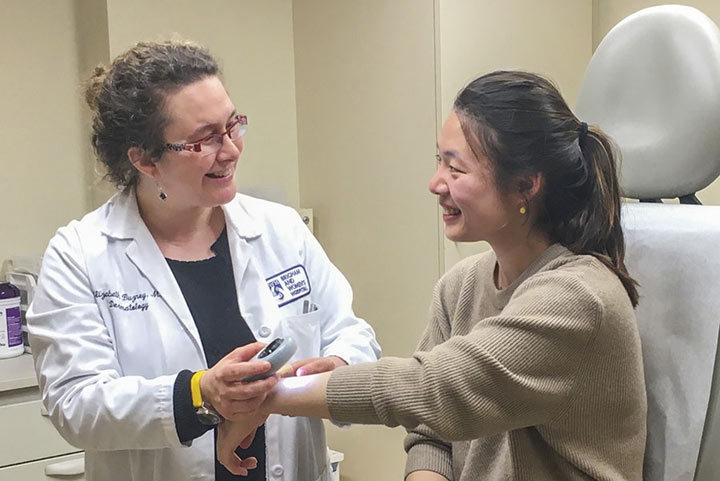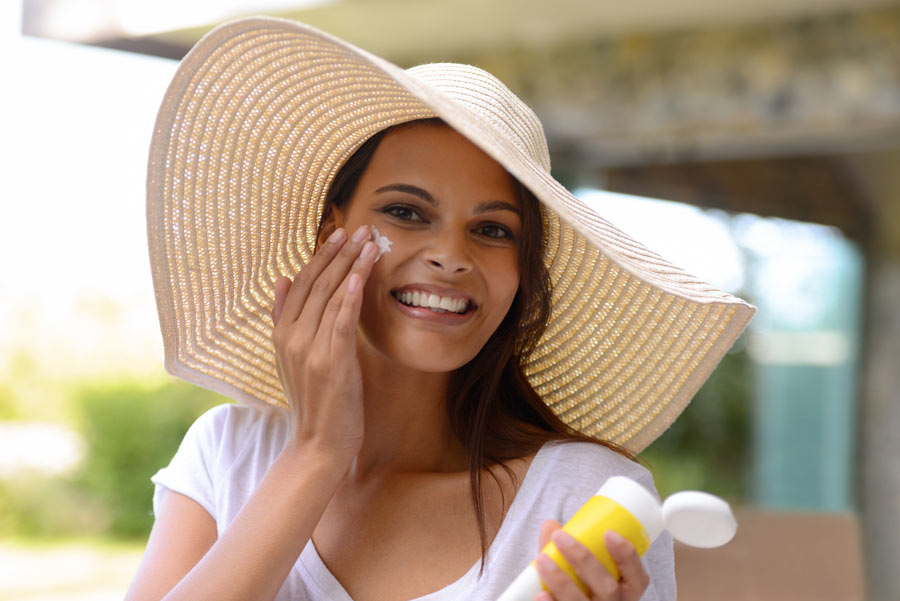We asked Elizabeth Buzney, MD, outpatient clinical director of the Department of Dermatology at Brigham and Women’s Hospital and assistant professor of dermatology at Harvard Medical School, how to use sunscreen most effectively. She also serves on The Skin Cancer Foundation’s Photobiology Committee.
Q: As a dermatologist and photobiologist, you’re an expert on the effects of sunlight on skin as well as sun protection and how it works. What is your advice for people searching for the perfect sunscreen for their needs?
Dr. Buzney: No sunscreen is a good sunscreen if you’re not going to use it. The take-home message is to choose one that you like. It should say “broad spectrum” for full protection from both types of dangerous UV rays. For many people, the texture and feel are important, especially for teenagers who have acne and won’t wear it if it feels greasy or sticky on their skin. Someone with dry skin may need something moisturizing. Outdoor athletes may want a dry feel that doesn’t sweat off easily. Parents want a formula that is easy to apply to their wiggly kids.
No matter what you choose, though, application is extremely important. Your skin is not an even surface. It’s bumpy, like the surface of a fence, for example. You need a product that goes evenly over the “fence,” as if you were painting it and giving it an even, protective coat. But you also want it to look good, smell good and last.
Q: How can we be sure we’re using enough sunscreen?
Dr. Buzney: It is crucial to apply it liberally, like brushing a thick coat of paint to cover the rough surface of that fence. Almost no one puts on as much sunscreen as the recommendations say. Most people put it on at just a quarter of the thickness needed to provide the level of sun protection factor promised on the label. Even people who have just participated in a class on how to apply sunscreen put it on at half the thickness of the SPF value. So no matter how much sunscreen you’ve been putting on, more is better.
Also, no matter how much you wish it lasted longer, sunscreen becomes less effective after about two hours, especially if you’re sweating or wiping it with a towel. You need to reapply sunscreen every two hours if you’re out in the sun, or immediately after swimming or sweating.
If you are using a spray sunscreen, there is a risk of inhaling the aerosol particles. Spray in an outdoor or well-ventilated area. Don’t spray the face. Instead, spray the product into your hands and then rub it on. Holding your breath while spraying is also a good idea. With sprays I also worry about uneven application. Spray it on the body surface until it glistens, and then rub it in. You want an even density of application, and plenty of it. Some people feel like a little light spray is enough, but it’s not.
Q: What about the common misperception that people don’t have to wear sunscreen if they’re in the shade?
Dr. Buzney: In the shade, you might feel like you’re protected from the sun’s dangerous ultraviolet (UV) rays, but I tell my patients, “If it’s not dark out, like night, there’s UV light.” People often only view sun exposure as that direct sun you can feel, but indirect, reflected exposure can be harmful, too. A 2017 study in JAMA Dermatology showed that 78 percent of participants in a “shade” group got sunburned over a 3½-hour period, while only 25 percent of those wearing sunscreen did. Neither shade nor sunscreen alone can completely prevent a sunburn from happening. The point is to use as many types of sun protection as you can, in combination — including clothing, hats, sunglasses and getting out of the sun.
Q: What’s your best response to people who don’t think they need sunscreen at all?
Dr. Buzney: We know that the sun causes most skin cancers, some of which can spread and become life-threatening. Research has also shown that sunscreen helps prevent skin cancer. Two important Australian studies showed that melanoma was reduced by 50 percent and squamous cell carcinoma by 40 percent in those who used sunscreen daily when used as directed. That’s huge. So keep slathering on the sunscreen!
If you want some extra motivation, how about this: People ask me, “How can I prevent my skin from aging? What’s the best thing I can do to keep my skin looking its youngest and healthiest?” They ask about all these expensive antiaging procedures and products. I tell them, “No. The best thing you can do to keep your skin young is to use sunscreen and other forms of sun protection every day.”

While doing skin exams, Dr. Buzney also counsels her patients on using every form of sun protection they can. Photo: Liset Chacin

*This article was first published in the 2018 issue of The Skin Cancer Foundation Journal.





